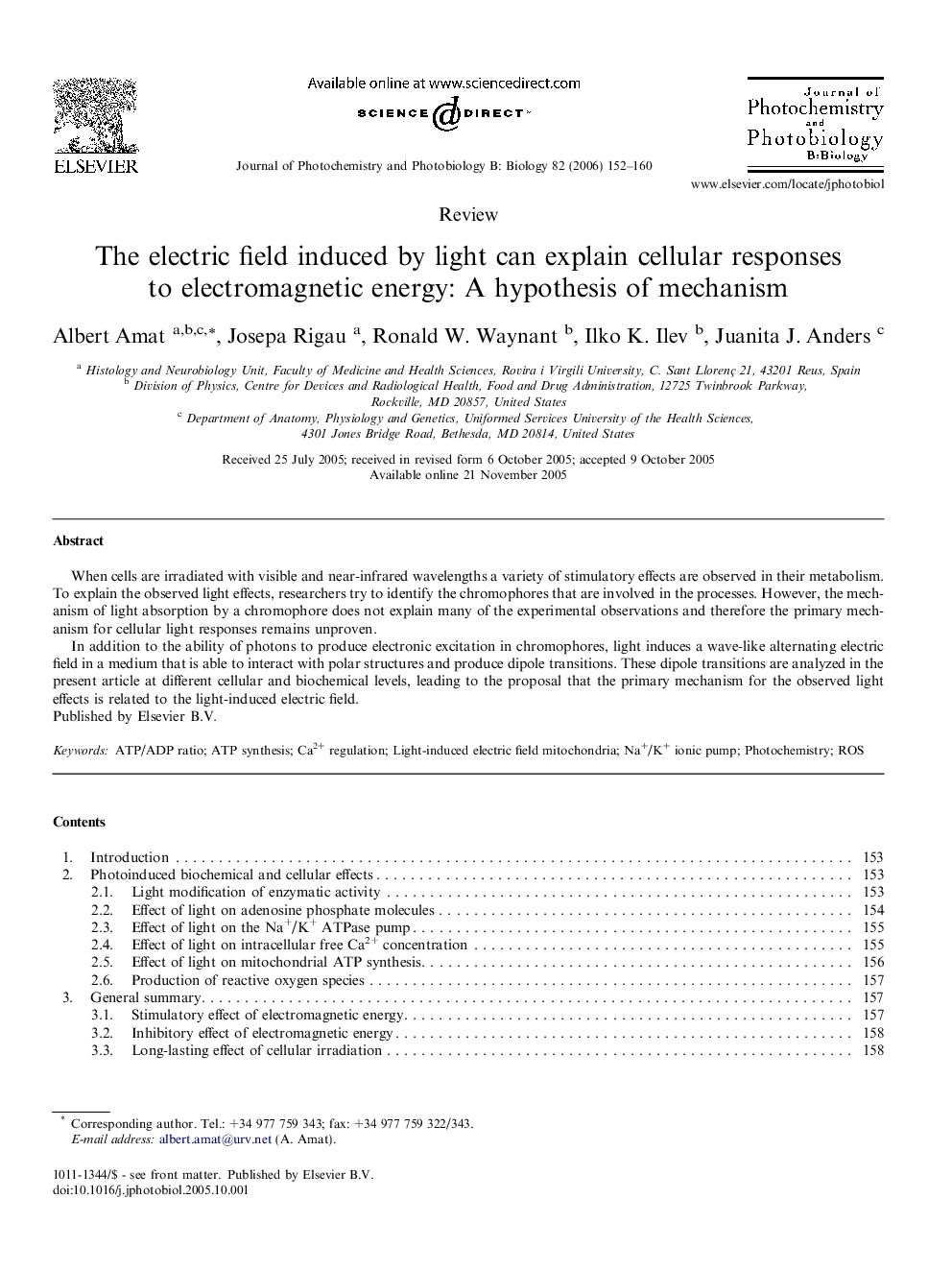| Article ID | Journal | Published Year | Pages | File Type |
|---|---|---|---|---|
| 31248 | Journal of Photochemistry and Photobiology B: Biology | 2006 | 9 Pages |
When cells are irradiated with visible and near-infrared wavelengths a variety of stimulatory effects are observed in their metabolism. To explain the observed light effects, researchers try to identify the chromophores that are involved in the processes. However, the mechanism of light absorption by a chromophore does not explain many of the experimental observations and therefore the primary mechanism for cellular light responses remains unproven.In addition to the ability of photons to produce electronic excitation in chromophores, light induces a wave-like alternating electric field in a medium that is able to interact with polar structures and produce dipole transitions. These dipole transitions are analyzed in the present article at different cellular and biochemical levels, leading to the proposal that the primary mechanism for the observed light effects is related to the light-induced electric field.
